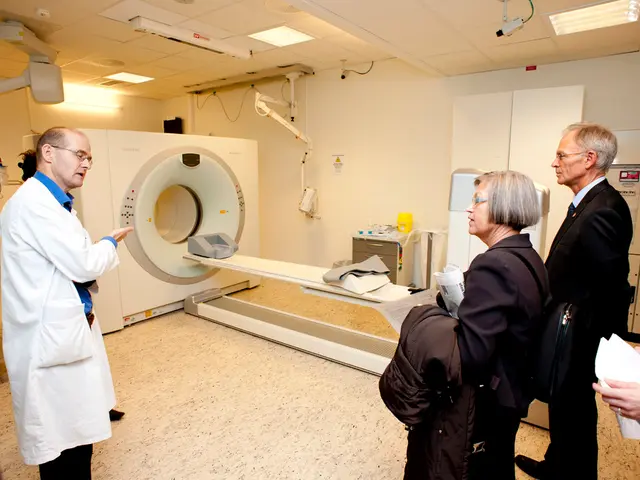Substantial reductions outlined in HHS budget plan for National Institutes of Health, as well as other departments
The Trump administration's proposed budget for the Department of Health and Human Services (HHS) in fiscal year 2026 outlines substantial spending reductions and structural overhauls, with consequential impacts on public health and biomedical research. The administration's budget blueprint indicates a $93.8 billion HHS budget, marking a 26.2% decrease from the FY 2025 enacted level of approximately $127 billion.
One notable aspect of the proposal involves the National Institutes of Health (NIH), which faces a proposed 40% budget cut, reducing its funding from $47.2 billion to $27.9 billion. This reduction may curtail research grants, clinical trials, and biomedical innovation. Experts have warned that such drastic cuts could slow scientific progress, delay breakthroughs in disease treatment and prevention, and compromise America’s position as a global leader in biomedical research.
Furthermore, the restructuring could also lead to reduced federal research positions, fewer collaborations with academic and industry partners, and a decline in support for early-career scientists. The National Cancer Institute, National Institute of Allergy and Infectious Diseases, and the National Institute on Aging are the only institutes set to be preserved under the reorganization, with substantial funding cuts for each.
Additionally, the Centers for Disease Control and Prevention (CDC) would face a 44% reduction in funding (from $9.2 billion to $5.2 billion), jeopardizing disease surveillance, outbreak response, and public health preparedness. The Indian Health Service (IHS) could also suffer a 30% cut, eliminating $900 million and potentially threatening healthcare for Native American and Alaska Native populations.
The budget proposal also includes the consolidation of 28 HHS operating divisions into 15, merging or dissolving several public health offices, and creating a new Administration for a Healthy America to absorb key agencies. Approximately 20,000 HHS positions would be eliminated, reducing the federal health workforce from 82,000 to 62,000 employees.
Critics, including major healthcare and scientific associations, have strongly opposed the proposed cuts, citing the potential detrimental effects on scientific progress and patient care. Organizations have emphasized that reduced funding would harm the health care continuum, reduce access to emerging treatments, and weaken the nation’s ability to respond to health crises. These groups have engaged in advocacy efforts to encourage Congress to reject the administration’s proposal.
Politics and general news have been abuzz with discussions on the Trump administration's FY 2026 proposed budget for the Department of Health and Human Services (HHS). The proposed budget blueprint indicates a significant reduction in funding for medical-conditions research and health-and-wellness programs, with policy-and-legislation concerning the National Institutes of Health (NIH) facing a 40% cut, reducing its funding from $47.2 billion to $27.9 billion. This potential decrease in funding has raised concerns among science experts who fear the slowing of scientific progress, delays in disease treatment and prevention breakthroughs, and a compromise in America’s leading role in biomedical research.








